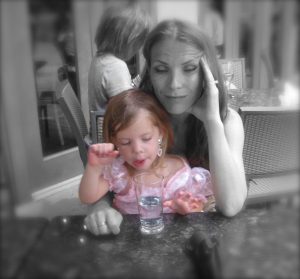20 Apr Growing up with Princess Inc.
 Generational experts Strauss and Howe argue that the kids from the Silent generation (born 1924 -1942) were the most gender-polarized in the 20th century until they became radicalized in the early 1960s. From Shirley Temple’s sausage curls to eerie robotic wives in their squeaky clean Stepford homes, girls and women fit neatly into the gender stereotypes until they rebelled against them as grown women.
Generational experts Strauss and Howe argue that the kids from the Silent generation (born 1924 -1942) were the most gender-polarized in the 20th century until they became radicalized in the early 1960s. From Shirley Temple’s sausage curls to eerie robotic wives in their squeaky clean Stepford homes, girls and women fit neatly into the gender stereotypes until they rebelled against them as grown women.
So how did the princess business become so successful half a century later? After an era when de-genderization of toys was the ruling meme among early childhood advocates, feminists and savvy parents, the toy distributors got busier than ever dividing up their stores into pink isles and blue isles. Toy producers must have paid close attention to psychological and evolutionary studies concluding that many gender differences are not learned, but inborn, like girls’ preference for the color pink. Such findings must have been used for everything they’re worth in an era when the toy industry decided to push Barbie Princesses on ever younger market segments and the more seductive Bratz to their older sisters. Even once-wholesome toddler staples like Strawberry Shortcake and Dora the Explorer have been relaunched after undergoing feminizing makeovers where hair and eyelashes are longer, their faces are slimmer and make-up discreetly applied.
Tween marketing became a popular concept at the height of the Millennials’ childhood. Even though exposure to TV advertisement reduced between 1974 and 2004, their total exposure to advertisement is up and the marketing industry is using ever more shrewd attempts to capitalize on this easily manipulated segment. Viral marketing using alpha queens to promote products at slumber parties is a hot scheme that target girls between 7 and 12. Or what about starting even earlier – in the maternity ward? This coming May the Disney company will emulate the infant formula companies longstanding success of acquiring new customers by donating formula powder, bottles and diaper bags to new mothers. As if our tweens and preschoolers weren’t enough, Disney now wants to build brand loyalty literally from birth by using ‘free onsies’ as their sales pitch.
At the heel of the much discussed and highly reviewed book “Cinderella Ate My Daughter” by Peggy Orenstein – not to mention an ever growing stream of studies linking girls’ low self-esteem and body dysmorphia with unhealthy role models – Wal-Mart continues the girly-girl trend by launching its new make up products to ever younger segments: “Geo Girl: Eco-friendly Cosmetics for 8- to 12-year-olds”. The product is clearly meant to penetrate the market beyond dress-up parties and play make up. Executive vice president of marketing and sales at Pacific World, Joel Carden can’t flaunt his true motives any more honestly when he says: “These are real cosmetics with natural ingredients that will create return purchases and create a true beauty consumer.”
But the beauty trend will probably not continue forever. As with any equilibrium seeking system, it is kind of hard to imagine 2030 being dominated by überversions of Paris Hiltons after all. That is, unless we decide to manipulate ourselves to look like this.


Sorry, the comment form is closed at this time.